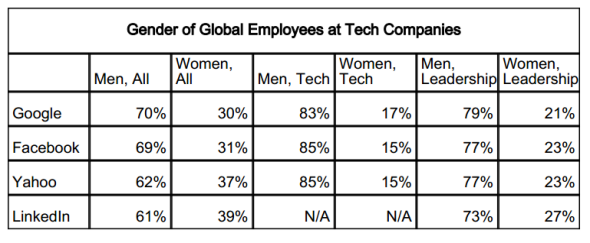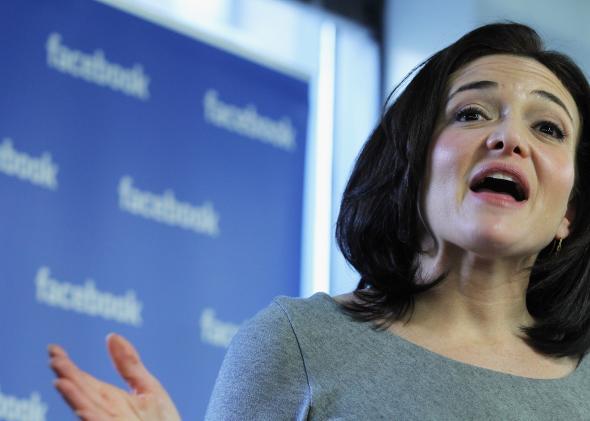It was a foregone conclusion that Facebook would release its workforce diversity data (and it did, earlier this week). In the month since Google became the first major tech company to publish its demographics, owning up to diversity issues has become something of a tech trend. LinkedIn and then Yahoo had already followed Google’s lead, making Facebook’s absence from the club conspicuous.
The lack of diversity in tech is often discussed as an industry problem. If nothing else, the statistics from Facebook, Google, LinkedIn, and Yahoo illustrate as much. Looking at the data, what stands out most is how similar the breakdowns are from one company to another. At Google, Facebook, and LinkedIn, the overall U.S. workforce is 91 percent white and Asian (and at Yahoo it’s 89 percent). All four companies employ just 3 to 4 percent Hispanic workers and 2 percent black workers. In terms of gender, between 60 and 70 percent of employees at each company are men. In leadership roles, that figure rises toward 80 percent, and in tech-specific leadership roles, it climbs toward 85 percent.

Chart data from Google, Facebook, Yahoo, and LinkedIn.
In addition to reporting similar figures, the tech companies have also issued nearly identical statements about their demographics. Google laid out the formula in late May when it reiterated its commitment to diversity in a blog post but conceded that “Google is miles from where we want to be.” LinkedIn echoed this tone in its announcement two weeks ago. “In terms of overall diversity, we have some work to do,” it admitted, before outlining steps it has taken to help close the gaps. Facebook’s statement this week fell in line accordingly: that “diversity is essential to achieving our mission” but “we have more work to do—a lot more.”
That these four major tech companies have chosen to come forward about their demographics all within a month of each other suggests that with controversial topics—i.e., diversity in Silicon Valley—there is safety in numbers. The spotlight is not turned on Google or Facebook, Yahoo or LinkedIn individually, but rather on the industry as a whole. This was likely intended. A source close to one of the companies, who asked to remain anonymous, said discussions took place about sharing diversity numbers over the past two months, though nothing was decided at those meetings. (The source did not specify which companies took part in those conversations.)
In the overall U.S. labor force, 80 percent of workers are white, 12 percent are black, and 5 percent are Asian, according to the Bureau of Labor Statistics. Forty-seven percent of the total employed are women. Figures are tougher to come by in tech specifically, but an oft-cited fact is that the pool of potential hires is itself largely white and Asian, and largely male. The fraction of women pursuing degrees in computer science has declined dramatically since the 1980s. Blacks and Hispanics are a small slice of college grads and of computer science degree holders.
Since the gap starts early, initiatives announced by Google and its peers have included donating to programs that expose women and minorities to computer science education from an early stage. Google is helping historically black colleges and universities improve their computer science programs. Facebook is collaborating with “Yes We Code,” which brings coding lessons to low-opportunity youth. “It’s encouraging to see not just the numbers, but that there’s real synergy in the solutions across tech companies, from education initiatives to unconscious bias training,” says Meghan Casserly, a spokeswoman for Google.
Time will tell if these initiatives prove effective at integrating tech workforces and increasing diversity among those getting a coding education. But in any case, Google’s lead in releasing its diversity data has gotten other tech companies talking.
